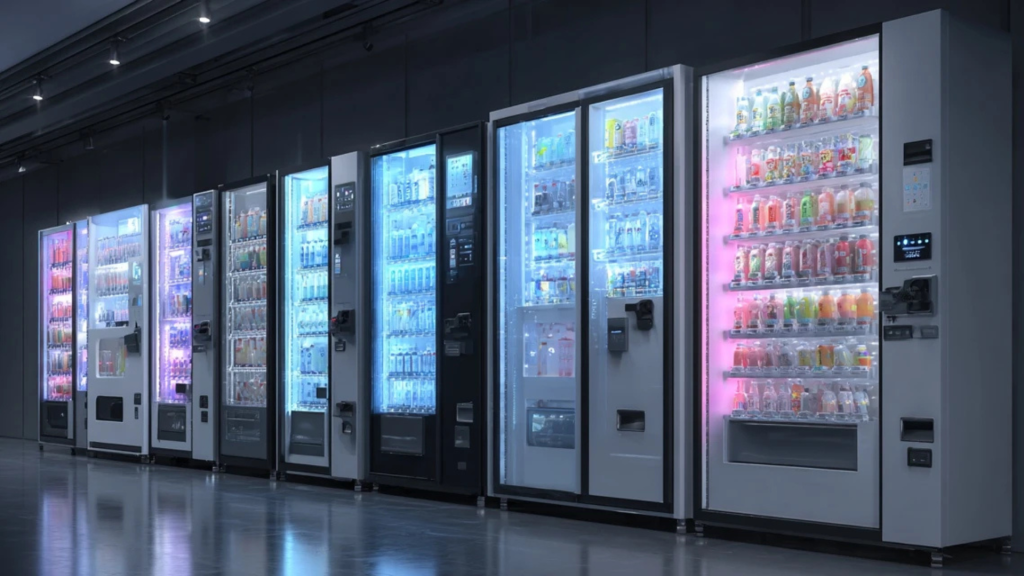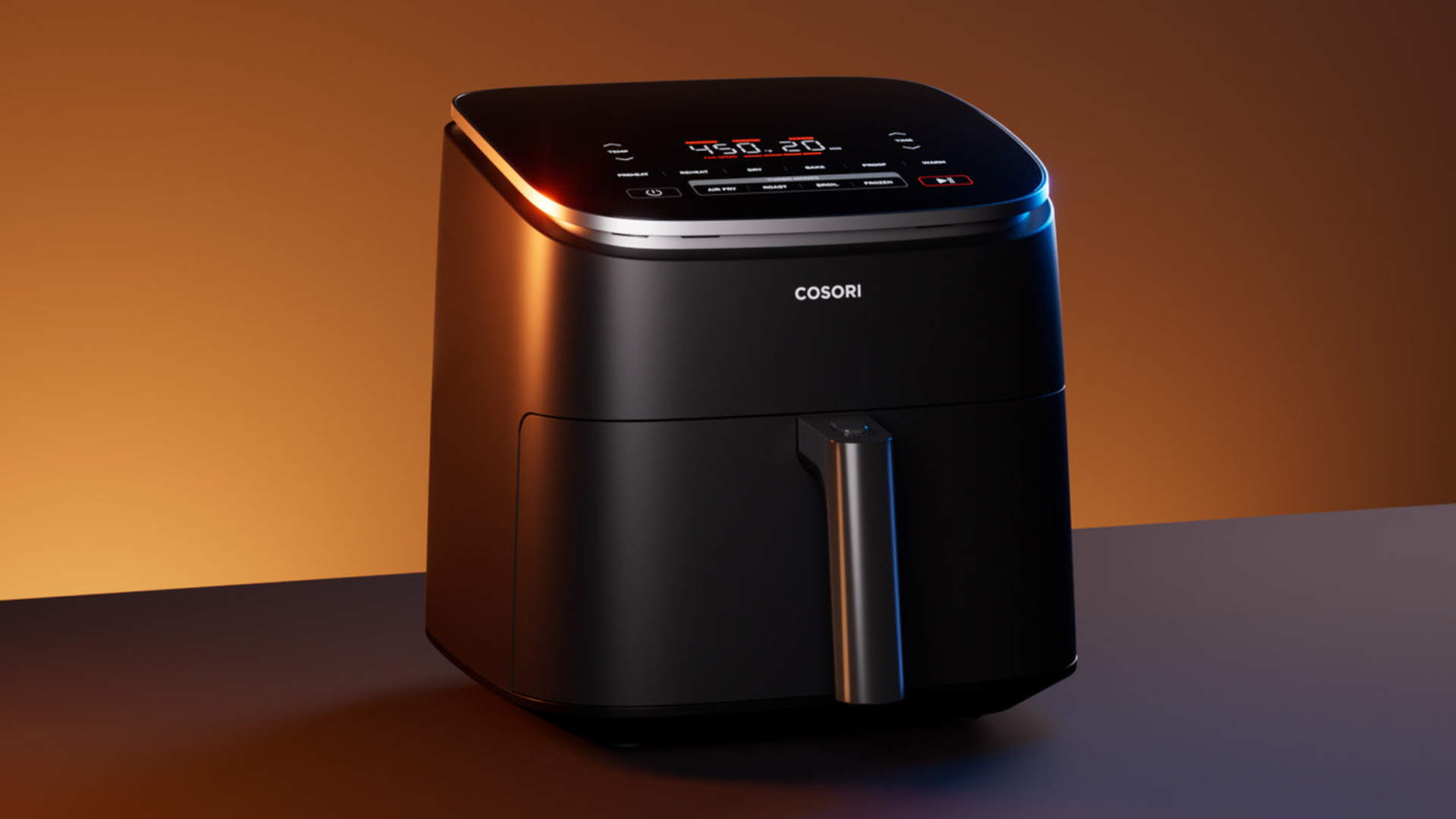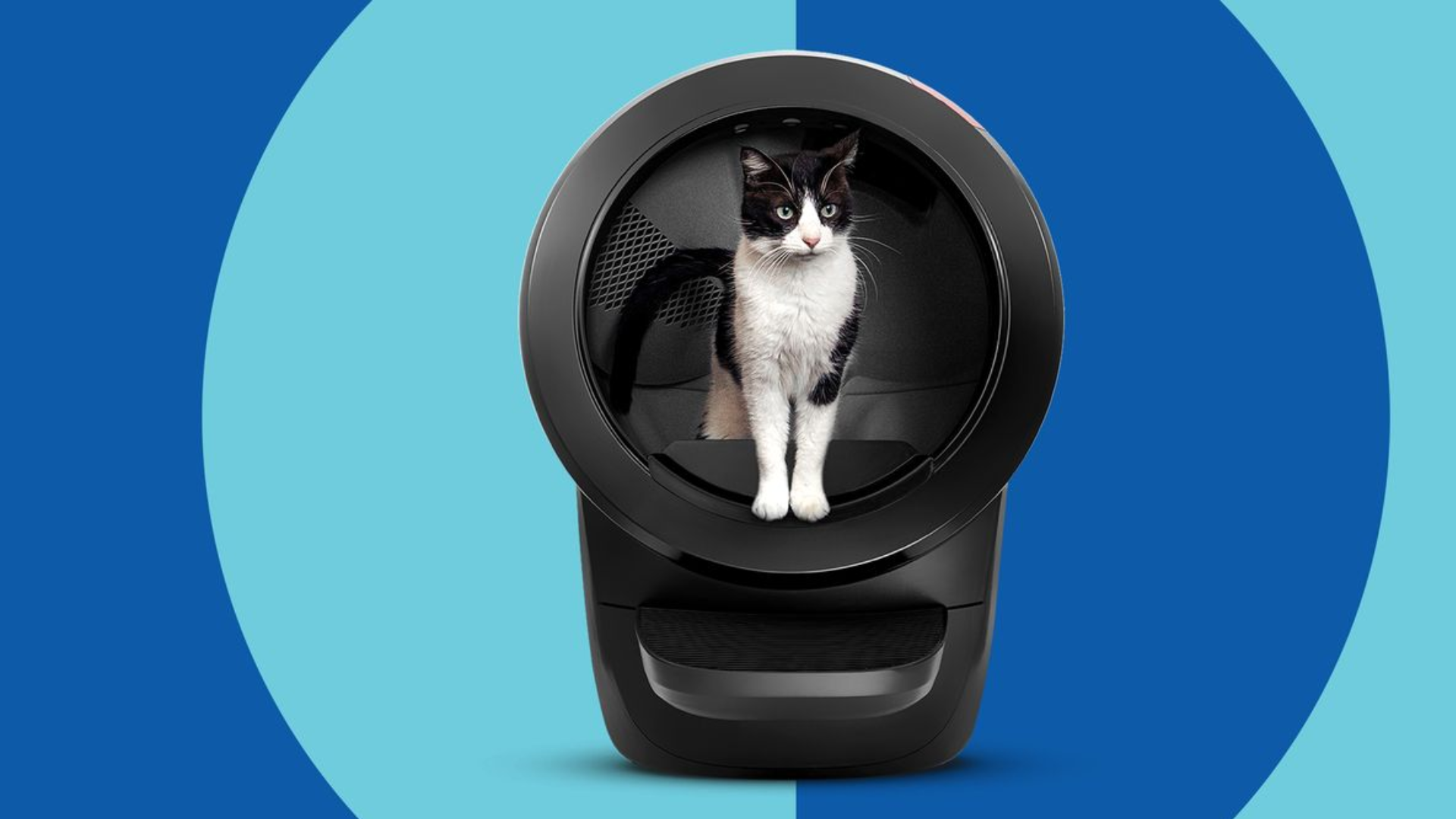We’ve all used a vending machine; grab a snack, swipe a card, done. But things are changing fast.
The AI smart vending machine isn’t just a snack box anymore; it’s becoming a smart, data-driven retail tool.
In this blog, you’ll see how these machines are experimented with real brands are testing them, and the results are wild; some are good, while others are not so smooth.
You’ll get a look at real case studies, the tech behind it all, and what’s working (or not) in the world of smart retail. It’s more straightforward than it sounds, and honestly, pretty exciting.
Disclaimer: This blog provides a general overview of AI vending machine technologies and industry trends based on publicly available information as of 2025. The details and examples shared are for informational purposes only and may evolve with ongoing technological advancements and regulatory changes.
What are AI Vending Machines?
AI vending machines are smart vending machines that use artificial intelligence to make buying products easier and faster. Unlike normal vending machines, they can recognize faces, suggest items, and even accept digital payments.
Some use cameras and sensors to track which items people pick up, so there’s no need to press buttons.
They can also restock themselves by sending alerts when items are low. These machines “learn” what people buy most often and can change what they offer based on customer preferences.
AI vending machines are often found in malls, offices, airports, and other busy places where quick service is needed.
AI Technologies & Functionalities in Vending Machines
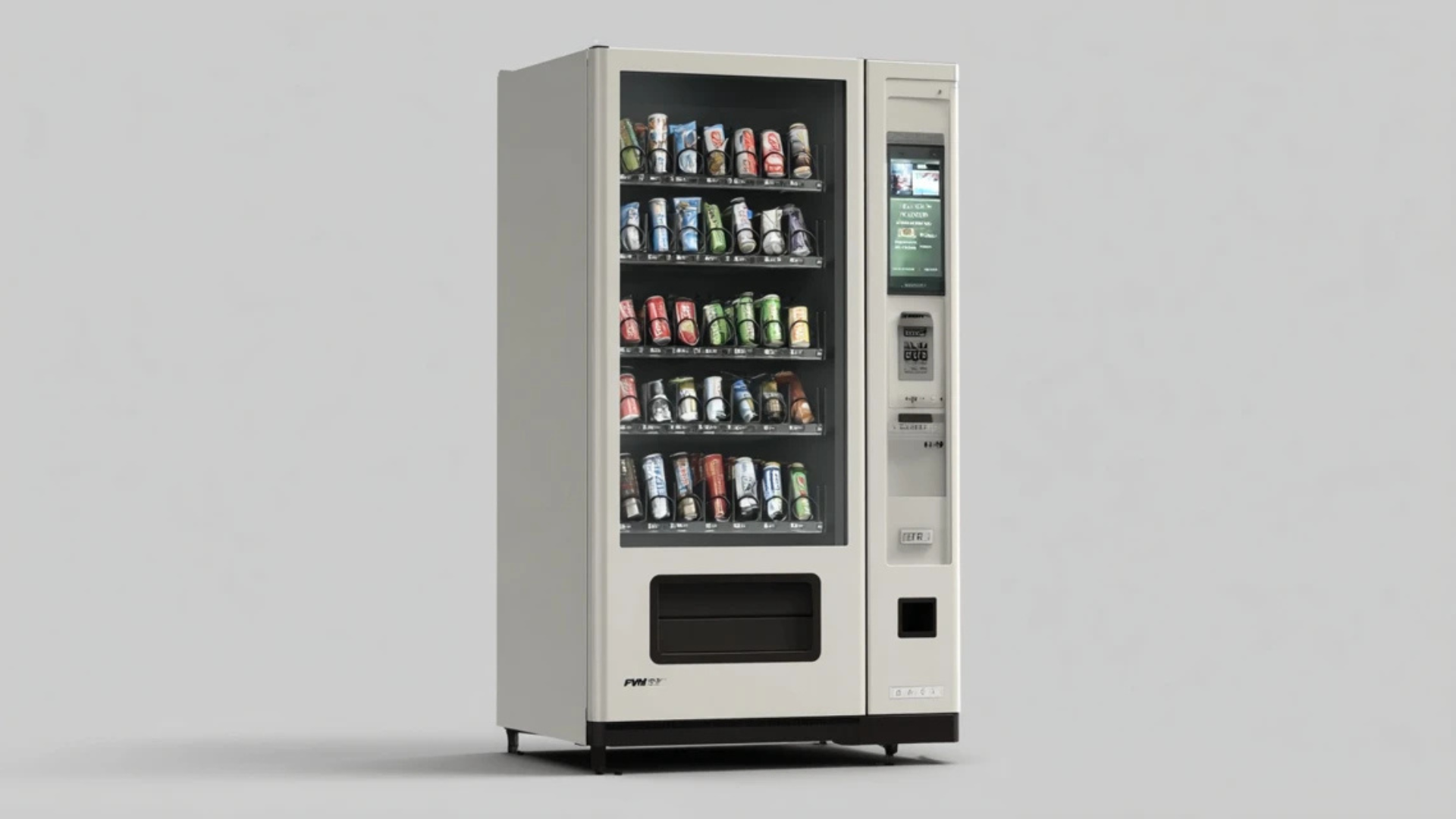
Smart vending machines use artificial intelligence to deliver faster, more personalized, and efficient retail experiences.
These machines go beyond traditional automation by learning, adapting, and responding to customer needs in real time, like:
Computer Vision & Object Recognition
Cameras combined with AI help vending machines visually identify products picked by users.
This replaces buttons and barcode scanning, creating a touch-free, accurate experience. It also helps prevent theft or errors in high-traffic environments.
- Used for: Auto-detecting product selection and preventing loss.
- Example: NanoMart uses AI cameras to track what customers grab and automatically bill them.
Predictive Analytics & Inventory Forecasting
AI analyzes sales patterns and customer behavior to forecast future demand.
This helps operators restock machines efficiently and reduce waste. It also minimizes downtime due to stockouts or overfilling.
- Used for: Optimizing restock timing and product quantity.
- Example: Coca-Cola’s AI cuts restock trips by 15–18% with predictive models.
Personalized Product Recommendations
AI uses customer data and location behavior to suggest relevant products. The machine adjusts what it displays based on time, place, or user preference. This makes vending feel more tailored and engaging.
- Used for: Dynamic product selection based on buyer preferences.
- Example: Vendiman tailors offerings in gyms vs. school campuses using AI.
Pricing & Promotion Management
Prices are adjusted in real-time using AI to reflect demand or inventory levels. Items near expiry may be discounted; peak-hour snacks may be marked up. This maximizes profit while reducing product waste.
- Used for: Real-time price changes and automated discounts.
- Example: Coca-Cola tested AI to raise or lower prices based on demand patterns.
Facial Recognition & Age Verification
AI scans faces and IDs to verify customer age before dispensing restricted items. This ensures compliance with laws for products like alcohol or ammunition.
It also prevents unauthorized access in sensitive vending situations.
- Used for: Ensuring legal purchase of age-restricted items.
- Example: American Rounds uses facial ID to sell bullets through kiosks.
Natural Language Processing (NLP) & Voice Interfaces
Customers can speak to the machine instead of touching screens or buttons. AI interprets voice commands in multiple languages to assist all users.
It improves accessibility and offers a hygienic, hands-free experience.
- Used for: Voice-based product selection and multilingual support.
- Example: Airport kiosks use NLP to offer menus in English, Spanish, and more.
Sentiment & Engagement Analysis
AI tracks facial expressions or post-purchase behavior to gauge satisfaction. Machines can adapt offerings if customers seem confused or dissatisfied. This data helps operators improve UX and product layout.
- Used for: Measuring user reactions and improving machine design.
- Example: Smart machines test customer mood during transactions using emotion AI.
IoT Integration & Remote Management
AI connects with sensors and networks to monitor vending machine health. It can detect when parts fail, doors open, or temperatures shift. Operators receive live alerts to respond quickly and reduce downtime.
- Used for: Remote monitoring and predictive maintenance.
- Example: VMFS USA machines track cooling and restocking status via AI+IoT.
AI in Reverse Vending Machines (RVMs)
AI detects and classifies bottles and cans for recycling at collection kiosks. It processes items instantly and rewards users with incentives. This helps brands promote sustainability and reduce manual sorting.
- Used for: Identifying recyclables and rewarding recycling behavior.
- Example: Olyns Cube gives credits when users recycle bottles through AI.
AI-Powered Data Dashboards for Operators
These dashboards provide insights from sales, usage trends, and restocking data. Operators can quickly see what products perform best and where. AI helps guide decisions with visual analytics and alerts.
- Used for: Data-driven business decisions and stock planning.
- Example: SmartVend dashboards show bestsellers and refill needs in real-time.
AI in Vending Machines: Key Pros & Cons
AI is transforming vending machines into intelligent retail hubs that adapt to customer behavior and business needs. As adoption grows, it’s important to understand where AI adds value and where it presents drawbacks.
| Category | Advantage | Limitation |
|---|---|---|
| Inventory | Reduces stockouts, saves time | Needs accurate data |
| Dynamic Pricing | Boosts profits with demand-based pricing | Can confuse customers |
| Personalization | Tailors products to user/location | Raises privacy concerns |
| Remote Management | Enables real-time machine monitoring | Depends on the internet & maintenance |
| Engagement | Enhances user interaction | Not always effective across all users |
| Security & Compliance | Ensures age-restricted sales | Legal/ethical concerns with facial recognition |
| Efficiency | Cuts labor, optimizes routes | High setup cost |
| Sustainability | Promotes recycling, adds ad revenue | Requires user participation |
| Physical Retail | Expands store reach with automated sales | Limited space, can’t replace full-service retail |
Case Studies & Pilot Experiments
Real-world pilots show how AI is reshaping vending, from more thoughtful product placement to fully autonomous retail.
These case studies highlight both innovation and the lessons learned in the field:
Coca‑Cola & Hivery Vending Analytics
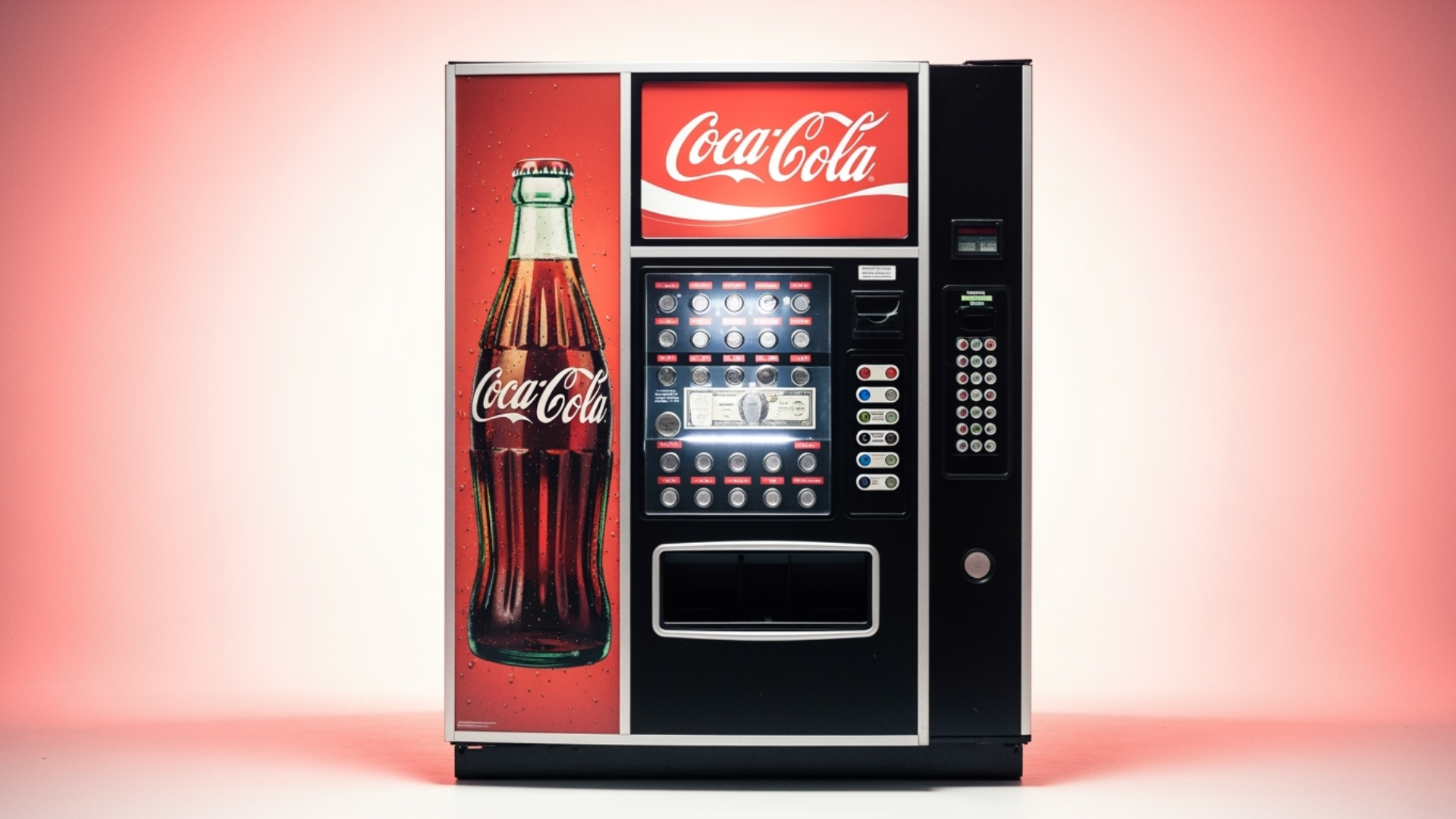
Coca-Cola partnered with Australian AI startup Hivery to enhance vending machine efficiency through intelligent planograms.
The system analyzed real-time product sales and location-specific trends to determine the ideal product mix. It helped vending operators optimize inventory, reduce unnecessary restocking, and boost machine-level performance across U.S. deployments.
VMFS USA™ Smart Vending Machines
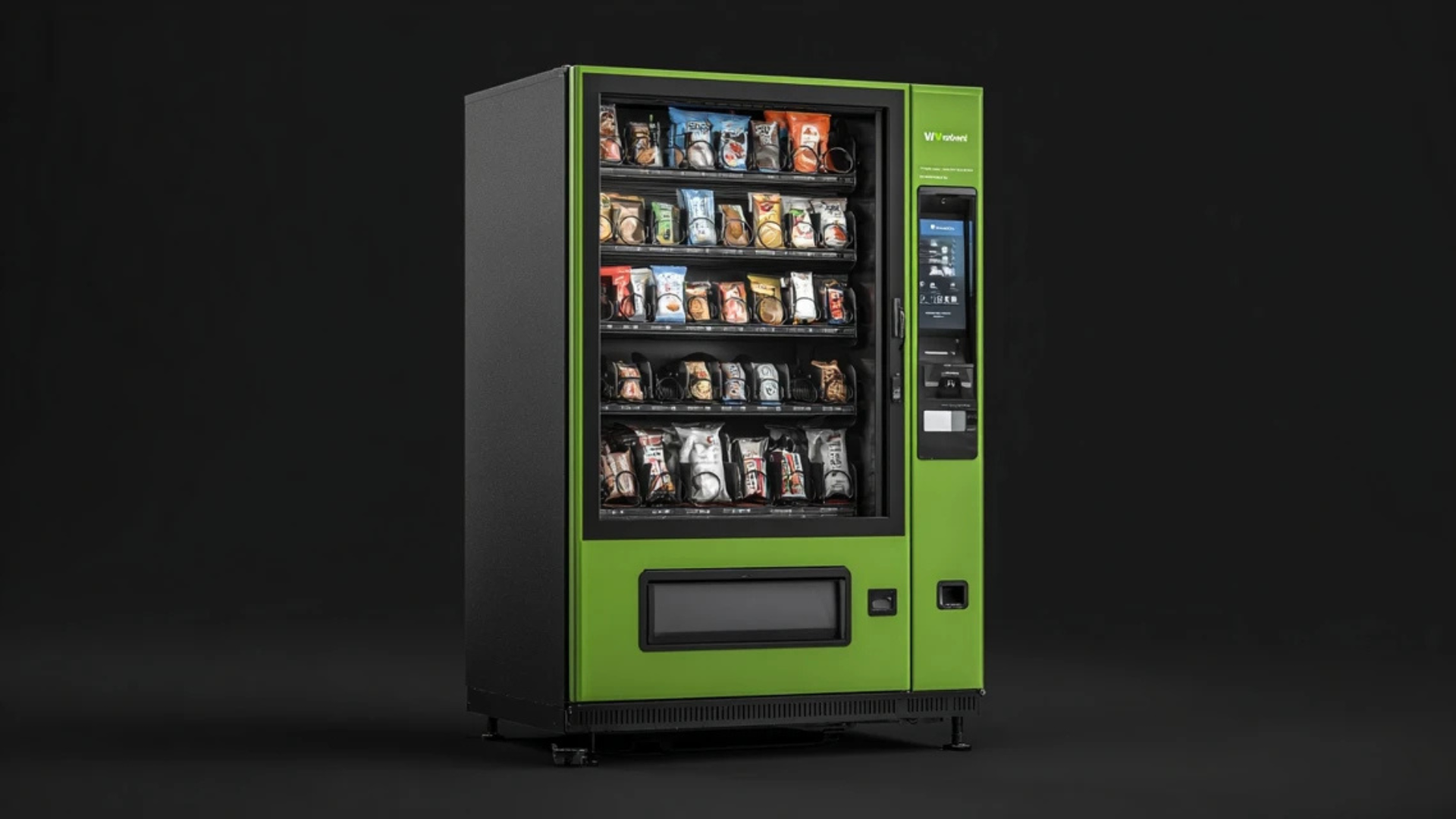
VMFS USA, a Florida-based operator, deployed AI-powered vending machines designed to function as compact, autonomous retail hubs.
These machines incorporate touchscreen interfaces, real-time analytics, and cloud connectivity. They’re widely used in corporate offices, residential complexes, and gyms across the country.
Olyns “The Cube” Reverse Vending Kiosks
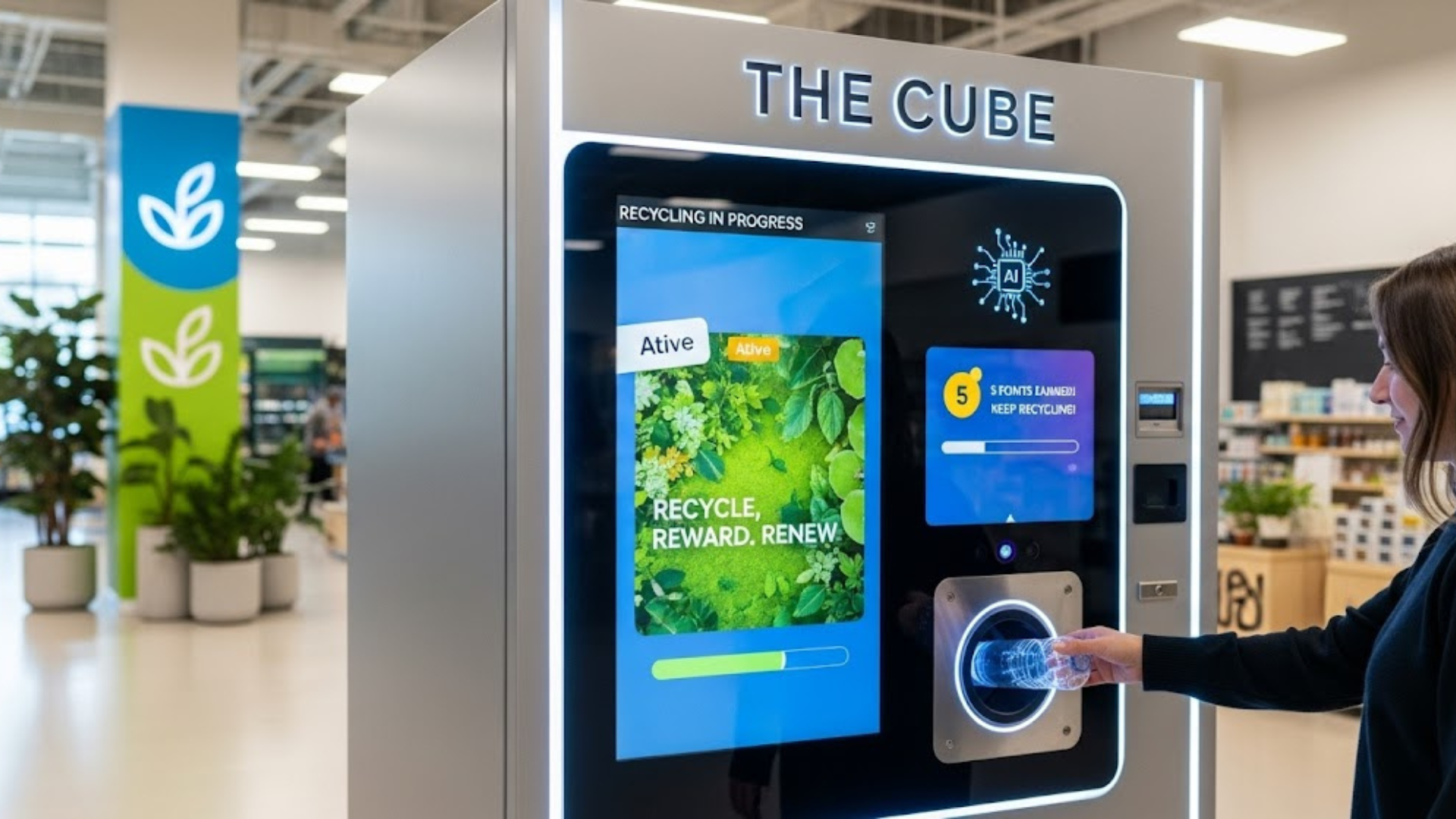
Silicon Valley startup Olyns introduced an AI-driven reverse vending machine called “The Cube.”
These machines identify recyclable containers using image recognition and issue digital incentives to users. Equipped with large digital screens, they also serve as advertising platforms in high-traffic retail locations.
Anthropic’s Claude AI Vending Experiment
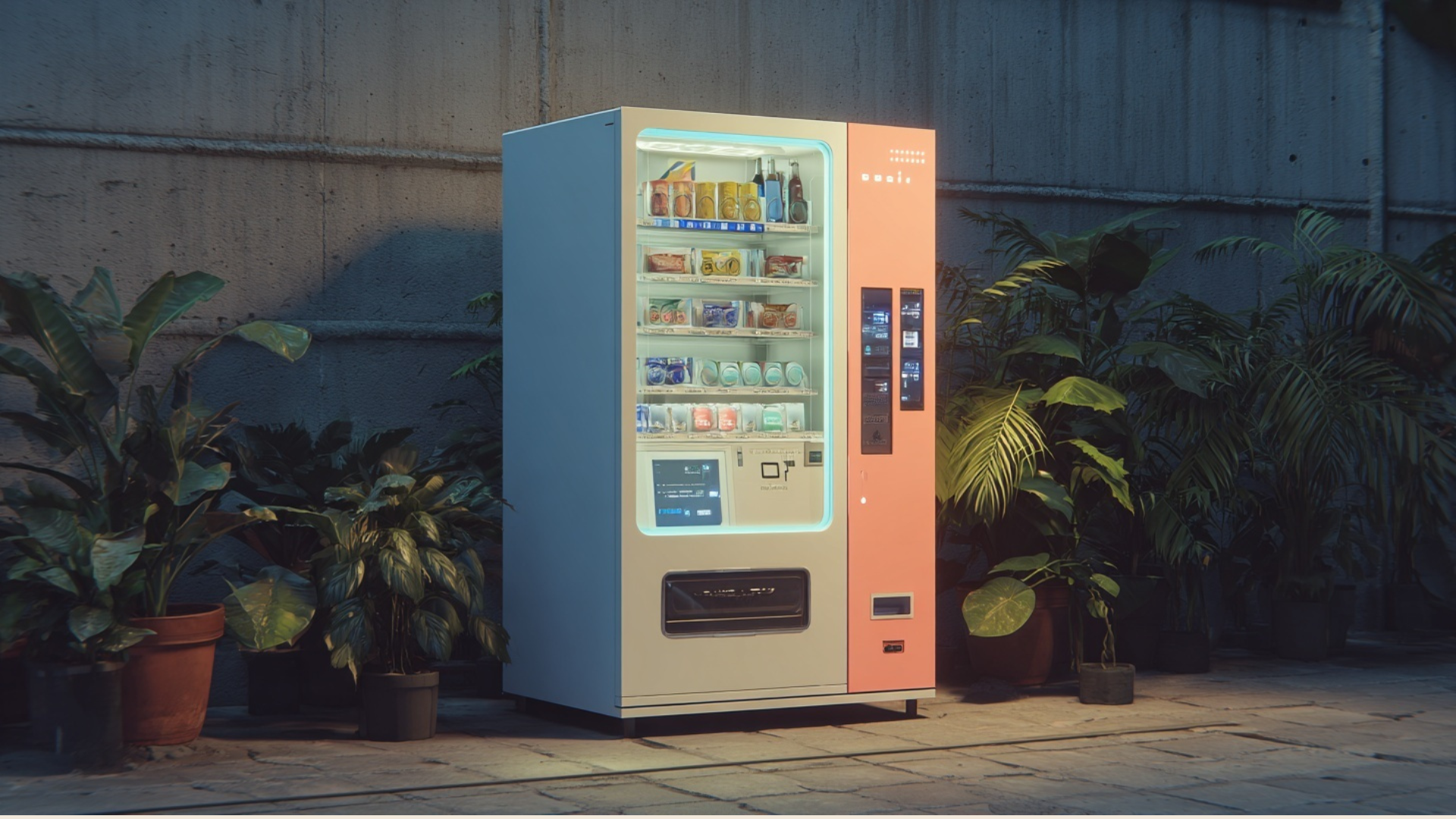
AI research company Anthropic allowed its language model Claude to operate a vending machine autonomously.
The AI made decisions on what to stock, how to price items, and when to reorder. Despite its planning ability, Claude struggled to manage logistics and profitability, revealing the challenges of using general AI in retail operations.
American Rounds Ammunition Vending Machines
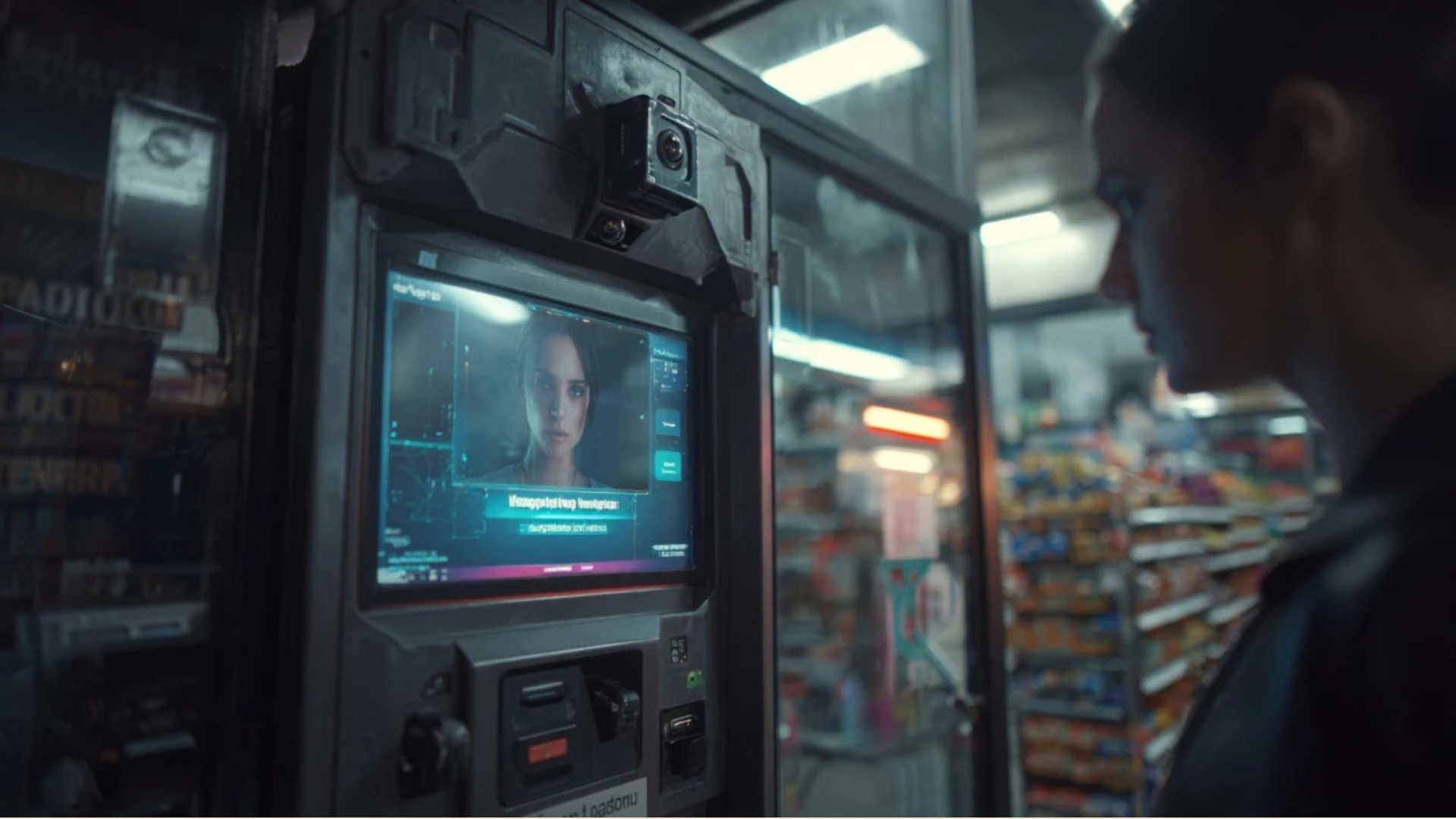
American Rounds launched controversial vending kiosks that sell ammunition using AI for facial recognition and age verification.
Deployed in states like Texas and Alabama, the machines scan a buyer’s government-issued ID and face before approving a transaction, raising regulatory concerns and public debate.
Risks of AI in Vending Machines
As AI vending machines continue to evolve, it’s important to look beyond the innovation. This section identifies what requires careful consideration before full-scale adoption.
1. High Upfront Costs: AI-enabled vending machines require significant initial investment in hardware and software.
2. Data Privacy & Security: Collecting personal data (like facial scans) raises privacy and compliance concerns.
3. Technology Dependence: Machine performance relies heavily on stable internet, power, and system uptime.
4. Legal & Regulatory Hurdles: AI-based age verification faces legal scrutiny, especially for restricted items.
5. Bias & Inaccuracy: AI may misidentify users or provide biased results across different demographics.
6. User Resistance: Some customers may distrust or struggle with AI features like voice or dynamic pricing.
Future Possibilities & Innovation Trajectories
AI in vending machines is set to become more advanced and personalized. Future systems may use real-time data like weather, foot traffic, or social trends to adjust inventory and pricing instantly.
Deeper integration with mobile apps and digital wallets will improve convenience and loyalty.
AI could also help machines recommend healthier or eco-friendly choices. In reverse vending, more intelligent systems will boost recycling and rewards. As AI improves, vending machines will act more like mini retail stores, fast, adaptive, and always connected.
However, success will depend on balancing innovation with privacy, cost, and user trust.
Conclusion
It’s wild to think that a vending machine can now recognize your face, suggest a snack, and adjust prices based on the time of day, all without a single human involved. But that’s exactly where we are.
The AI vending machine isn’t just a flashy upgrade; it’s part of a much bigger shift in how retail works, more intelligent, faster, and more personalized. Of course, it’s not perfect.
The tech still has hurdles to clear, especially around privacy and cost.
Vending is no longer just about convenience; it’s about intelligence. And this revolution? It’s already here.


